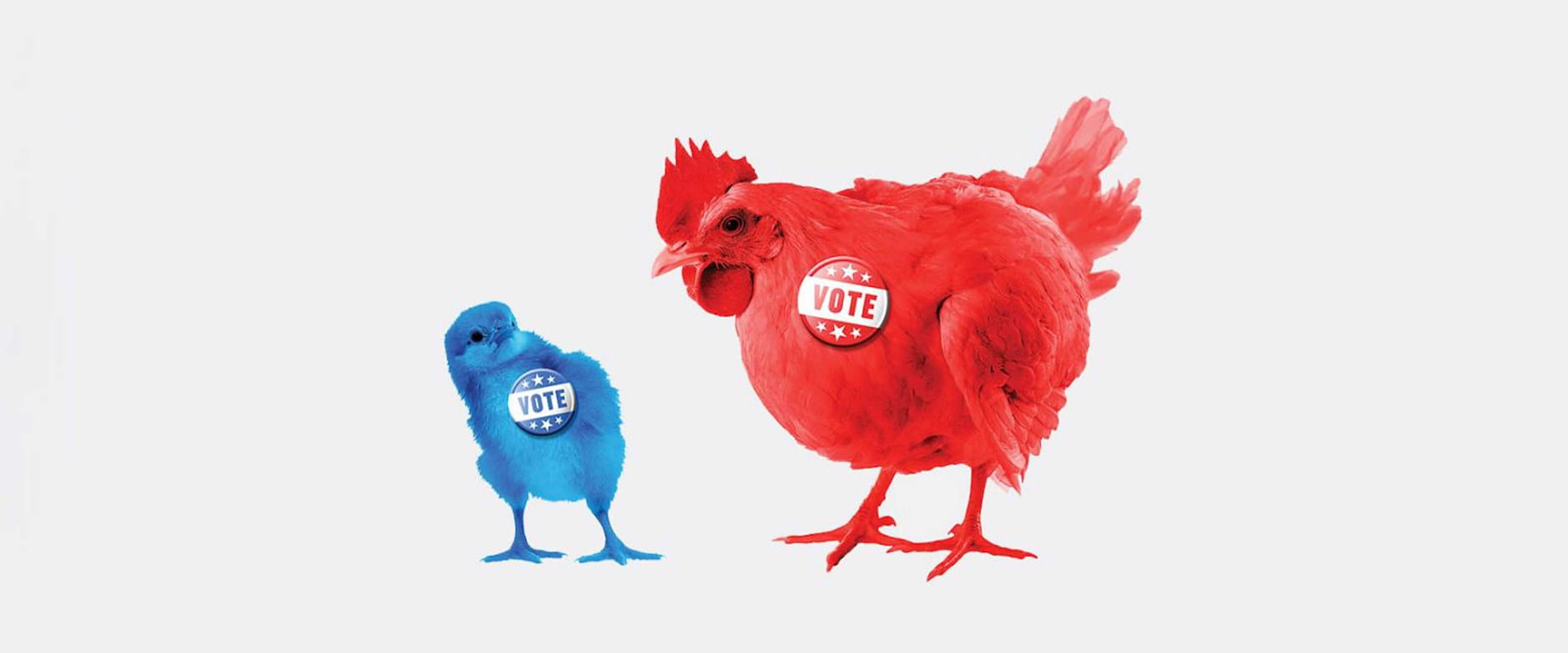
Capitalisn’t: Ask Luigi Zingales Anything
The Chicago Booth finance professor and Capitalisn’t cohost fields questions on everything from competition policy to his favorite soccer team.
Capitalisn’t: Ask Luigi Zingales Anything
Matt Chase
While politics in the United States has become polarized, Americans may hold less extreme views than many people realize. Political scientists describe a “purple America,” a large moderate middle surrounded by sizeable, but smaller, conservative (red) and liberal (blue) populations.
But research suggests that there is a neglected dimension of polarization, one driven by age: younger people are disproportionately liberal, and then drift steadily to the right, becoming just as disproportionately conservative by retirement age.
“We can say, with a great deal of confidence, that people get more conservative when they get older—and a lot more,” says Chicago Booth’s Sam Peltzman, who conducted the research. “It’s not just a little bit. It’s a pretty big change over their lifetime.”
Though some people form their political beliefs early in life and stick with them, most of us follow a predictable and durable pattern: our political beliefs steadily become more conservative as we age, no matter what generation we belong to or what era we grew up in, the research finds.
One way to consider the relationship between age and political ideology is to take a snapshot of Americans at a fixed point in time: How do the political ideologies of today’s older people compare with those of today’s younger people? But this makes it difficult to determine if differences are due to age or the times young and old people have lived through, an issue known as the cohort conundrum. Thus, to truly understand age effects, it’s also important to track how individual political ideologies change over time.
The average American was more likely to identify as politically liberal at age 25 but more likely to be conservative 20 years later.
Political ideology at select ages over the course of 1974 to 2018



Peltzman, 2019
Self-reported data about political ideologies in the US can be found in the General Social Survey, run by the nonpartisan and objective research organization NORC at the University of Chicago and conducted either annually or biennially, depending on the timing. Peltzman analyzed surveys from 1974 to 2018, looking at both period data, which compare the answers of people of various ages during a five-year span, and cohort data, or how individuals’ political ideologies shift over time.
Since the GSS polls different, randomly selected Americans during each iteration, Peltzman created synthetic cohorts of respondents. For example, he looked at a sample of 25-to-29-year-olds from the 1974–78 surveys, and then at a group of 30-to-34-year-olds from the 1979–84 surveys, to essentially imitate following individuals as they aged.
The survey asked respondents to rate their political ideology on a scale from “extremely liberal” to “extremely conservative.” Peltzman assigned their answers a value: -1 for respondents who reported being extremely liberal, liberal, or slightly liberal; +1 for extremely conservative, conservative, and slightly conservative; and 0 for moderate. He averaged these numbers to create a measure he calls libcon, the difference between conservatives and liberals as a share of all respondents.
Though Peltzman finds some period-to-period variation, on average, respondents’ political ideologies steadily shifted from liberal to conservative as they got older, a pattern that persisted across more than 40 years of data. “We are not observing some coincidental piling of older people from some bygone conservative era atop contemporary liberal youth,” he writes.
“All the chatterers on TV are fixated on this idea that young people have gotten more liberal, that they’re all socialists now. That’s wrong.”
—Sam Peltzman
Peltzman averaged the results across the entire period he considered. He finds that 34 percent of 25-year-olds identified as liberal, compared with 25 percent of 45-year-olds and 20 percent of 75-year-olds. On the other end of the political spectrum, 26 percent of 25-year-olds identified as conservative, compared with 36 percent of 45-year-olds and 41 percent of 75-year-olds.
Age 45 is the rough average of when most people have drifted far enough right to no longer be considered liberal. The rightward drift slowed down past age 45, but did not stop.
Across the GSS data, the under-45 group proved “reasonably purple,” with 30 percent of people identifying as liberal, 30 percent identifying as conservative, and 40 percent identifying as moderate. And “maroon” is a more accurate description of the over-45 group, with conservatives making up a larger share, Peltzman writes.
If the pattern persists, he adds, today’s older conservatives aren’t likely to be replaced by a crop of radical liberal voters. And young liberals should get comfortable with the fact that they’ll likely become more conservative as they age.
“All the chatterers on TV are fixated on this idea that young people have gotten more liberal, that they’re all socialists now. That’s wrong,” Peltzman says. “They’re about as liberal, on average, as they have been over the past 50 years, which leads me to believe that by the time they’re 45, a lot of this will go away.”
Sam Peltzman, “Political Ideology over the Life Course,” Working paper, December 2019.

The Chicago Booth finance professor and Capitalisn’t cohost fields questions on everything from competition policy to his favorite soccer team.
Capitalisn’t: Ask Luigi Zingales Anything
Network theory can both help you become more successful professionally and explain political and sociological trends.
Can Social Networks Explain Our Politics?
Findings from a series of surveys suggest that simple gender preference may be the explanation.
Some Fathers Are Less Willing to Spend on Daughters than on SonsYour Privacy
We want to demonstrate our commitment to your privacy. Please review Chicago Booth's privacy notice, which provides information explaining how and why we collect particular information when you visit our website.